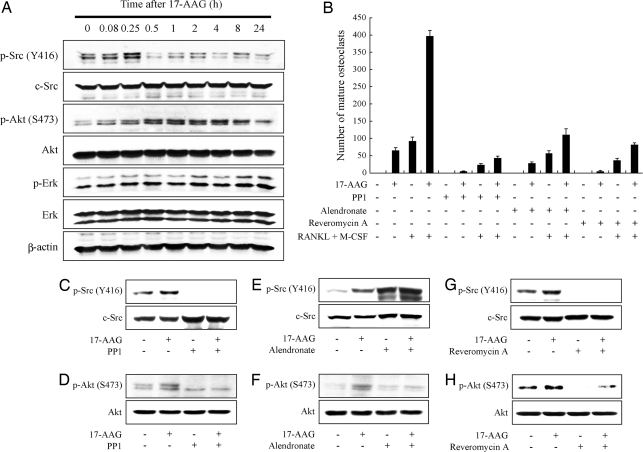Fig. 1.
17-AAG-induced osteoclastogenesis requires Src kinase activation. (A) 17-AAG induces transient phosphorylation of c-Src on Y418 and of Akt on Ser-473. RAW264.7 cells were treated with 1 μM 17-AAG for the indicated times after incubation with 100 ng/ml RANKL and 10 ng/ml M-CSF for 5 days. Phosphorylation and protein levels of Src, Akt, and Erk in total cell lysate were detected by Western blot using specific antibodies. (B) 17-AAG induces osteoclastogenesis, which was abolished by either 10 μM PP1, 30 μM alendronate or 5 μM reveromycin A. RAW264.7 cells were treated with 1 μM 17-AAG and indicated reagents in the presence or absence of 100 ng/ml RANKL and 10 ng/ml M-SCF for 5 days. The number of mature osteoclasts with more than three nuclei stained by TRAP was counted. Data are indicated as the mean of three independent experiments ± SEM. (C–H) RAW264.7 cells were pretreated with either PP1, alendronate or reveromycin A for 1h and incubated with 1 μM 17-AAG or DMSO for 15 min after incubation with 100 ng/ml RANKL and 10 ng/ml M-SCF for 5 days. Phosphorylation and protein levels were detected as described above.

